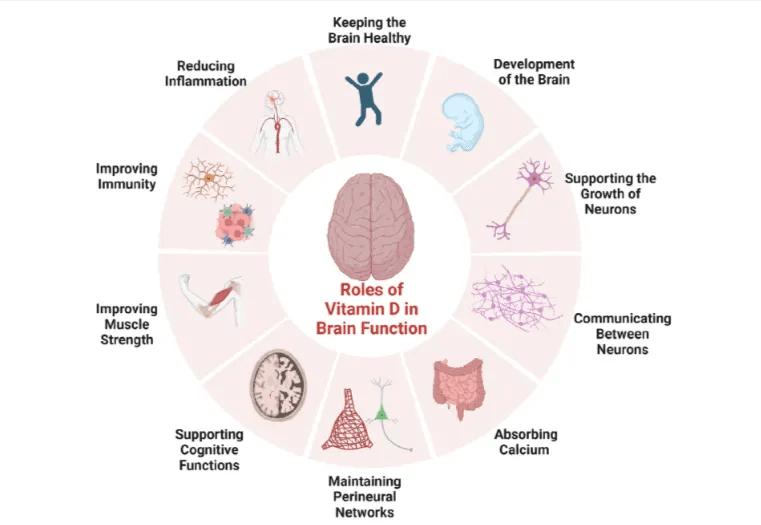Why Hair Loss Matters for Longevity
Hair isn’t just about vanity. It’s a visible signal of internal health—and often one of the first places imbalance shows up.
Hair loss can reflect deeper issues: nutrient deficiencies, chronic inflammation, hormonal shifts, autoimmune risk. One of the most overlooked patterns we see is vitamin D hair loss.
And while it’s easy to dismiss it as “just aging,” the truth is that hair loss often precedes other symptoms of decline.
Get Weekly Insights to Personalize Your Own Longevity Roadmap
From a longevity perspective, it’s a clue worth listening to.
The health of your hair is often a reflection of the system underneath it.
Personally, I have much better hair now—fuller, longer, stronger—than I did 10 years ago. Even compared to 5 years ago, or 2. My hairline has filled in, regrowth is steady, and I now lose far less in the shower. It didn’t happen by accident. It came from identifying and correcting root causes—especially low vitamin D. I’ve detailed my complete approach in my personal Vitamin D Protocol for anyone looking to understand the full picture.
So, can low vitamin D cause hair loss?
That’s what this article is about: the overlooked connection between vitamin D and hair loss—and what to do if it might be playing a role for you.
Table of Contents
1. Can vitamin D Cause hair loss: What Clinical Evidence Say About Vitamin D and Hair Loss
Multiple studies have explored the link between low vitamin D levels and various types of hair loss, including androgenetic alopecia (AGA), alopecia areata (AA), and telogen effluvium (TE). Across the board, serum 25(OH)D levels tend to be significantly lower in affected individuals compared to healthy controls.
So, does low vitamin D cause hair loss?
Based on the data, the answer is: yes it can—especially when it comes to thinning triggered by stress, autoimmunity, or nutrient depletion.
But context matters, and the details can shift by hair loss type.

In androgenetic alopecia (AGA)—commonly known as pattern hair loss—several case-control studies have shown that people with AGA have notably lower vitamin D levels than matched controls. Some also found an inverse relationship between severity and serum D.
Table 1. The studies showing the relationship between vitamin D and hair loss.
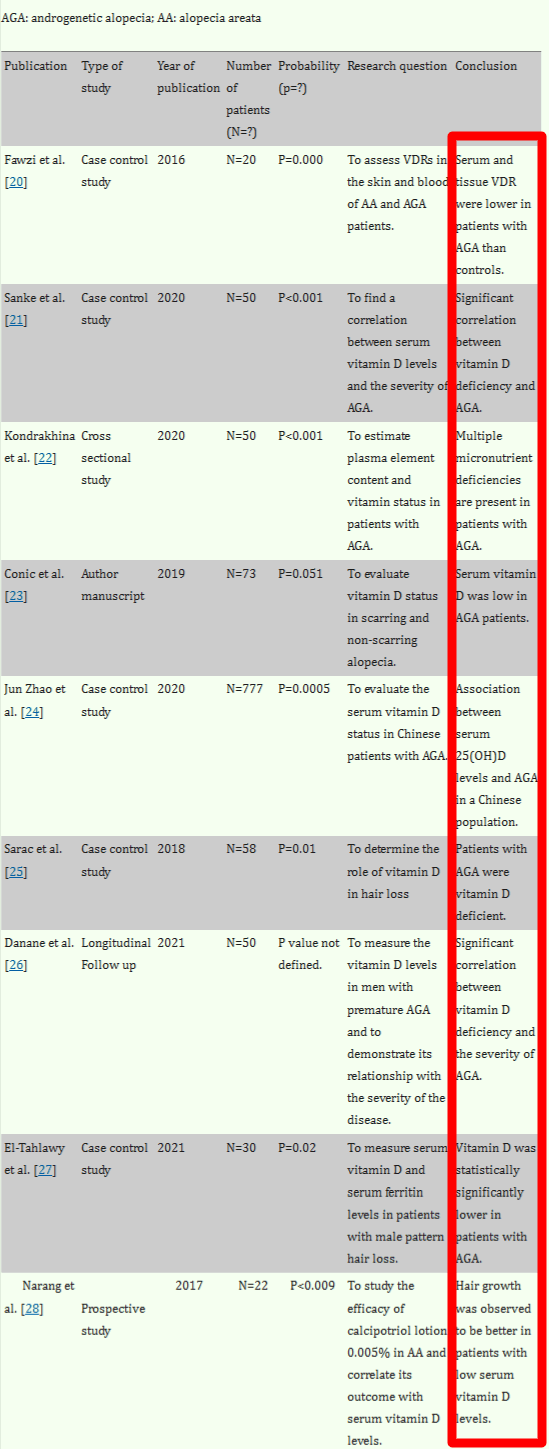
Alopecia areata (AA) shows one of the strongest associations.
Individuals with alopecia areata (AA) were found to have a higher likelihood of vitamin D deficiency, with odds ratios ranging from approximately 2 to 7 and a prevalence of deficiency generally between 50% and 85%. In other words, people with alopecia areata (AA) are more likely to lack vitamin D, with studies showing they could be 2 to 7 times more at risk and about 50% to 85% of them having low levels.
In another large cross-sectional study of 100 individuals, more than 60% of AA patients were deficient in vitamin D.
Another type of hair loss, Telogen effluvium (TE) is a type of diffuse hair shedding that’s often triggered by stress, illness, or nutrient imbalances.
And while it’s not always caused by low vitamin D, research suggests a possible link in about 30% of cases.
Some studies suggest TE patients tend to have lower vitamin D levels — but not all data points in the same direction. For example, a 2011 out of Turkey actually found higher vitamin D levels in TE patients compared to healthy controls. So clearly, vitamin D is only one piece of a much larger puzzle.
However, many of these cases, the underlying trigger appears to be vitamin D hair loss, showing up as thinning or poor regrowth that improves once levels are restored.
Specifically, what’s interesting is what happens when TE patients do supplement with vitamin D.
In one study using scalp imaging (dermoscopy), researchers found that many patients had signs like reduced density, empty follicles, single-hair units, and short regrowing hairs — especially in the midline and temporal regions.
But after three months of oral vitamin D therapy, most of these markers improved: more hairs per follicle, better density, and fewer short regrowths.
Bottom line?
Vitamin D might not be the only factor behind TE, but it could play a supportive role in recovery — especially when it’s combined with addressing other root causes.
The images below show a patient diagnosed with telogen effluvium.
(a) Clinical presentation before treatment.
(b) Visible improvement after 3 months of oral vitamin D supplementation.
(c) Dermoscopic image prior to treatment (DermLite II Pro HR, 3Gen, polarized mode, 10× magnification).
(d) Dermoscopic image after 3 months of vitamin D treatment, showing increased hair density and improved follicular patterns (same device and settings).

2. A Mechanisms: Why Vitamin D Matters for Hair
Most people think of vitamin D in terms of general wellness—but it plays a surprisingly direct role in hair biology.
Specifically, it acts as a signaling molecule with effects on both skin and follicle function, working through the vitamin D receptor (VDR), which is found throughout the hair growth unit.
2.1 VDR and Hair Follicle Cycling
The VDR is found in the outer root sheath, hair matrix, and dermal papilla—all key compartments of a functioning follicle.
In mouse studies where the VDR gene is knocked out, hair grows once during development but is lost after the first cycle, and regrowth never occurs. These mice fail to initiate the next anagen (growth) phase, highlighting how essential VDR is for ongoing cycling.
In humans, mutations in the VDR gene cause early-onset alopecia universalis, as seen in individuals with vitamin D–dependent rickets type II. Despite normal follicle formation, hair is not maintained—indicating that VDR is not required for hair development, but is critical for its regeneration.
One likely mechanism: VDR regulates genes like Hr (hairless), which govern the shift between the catagen and anagen phases.
Without VDR signaling, that reset fails.
Takeaway: If vitamin D is too low to support VDR activity, hair may enter “rest” mode—and stay there.
2.2 Immune and Inflammatory Role
Hair follicles are immune-privileged—but that protection breaks down in inflammatory or autoimmune conditions like alopecia areata (AA). Vitamin D helps preserve that environment.
The active form of vitamin D, 1,25(OH)₂D, promotes a shift from pro-inflammatory Th1 and Th17 signaling toward Th2 dominance and regulatory T cells (Tregs). This modulation helps prevent immune attacks on follicles in AA—and may also reduce micro-inflammation seen in AGA.
Additionally, vitamin D supports epithelial barrier integrity, which is relevant in chronic skin and scalp inflammation.
🧬 This explains why vitamin D relevant in hair loss driven by immune dysregulation—not just deficiency.
2.3 Differentiation and Follicle Turnover
Vitamin D also regulates the proliferation and differentiation of keratinocytes in the hair bulb. These cells produce the structural proteins that make up the hair shaft.
VDR expression increases during the transition from anagen (growth) to catagen (regression), and modulates how rapidly the follicle resets. Without it, the follicle’s rhythm is disrupted—and can lead to miniaturization or arrested growth.
So, does low vitamin D cause hair loss by directly stalling follicle turnover? In many cases, yes—especially when deficiency persists for several months without correction
Figure 2. Abnormal Hair Follicles in Vitamin D Receptor Knockout Mice (VDRKO)
Histological sections from wild-type (+/+) and VDR knockout (–/–) mice at various ages (newborn to 3 months), stained with H&E and PCNA.
Compared to wild-type controls, VDRKO mice show progressively abnormal hair follicle architecture—by 3 weeks and 3 months—reflecting disrupted hair cycling and impaired follicle regeneration.
These findings demonstrate the essential role of the vitamin D receptor in maintaining healthy hair growth.

Hair follicles aren’t static—they’re constantly cycling. Vitamin D helps keep that rhythm intact.
3. Why So Many Are Deficient—And Don’t Know It
Vitamin D deficiency isn’t just a winter issue. It’s become a year-round, global problem—even in places with abundant sunshine.
Over 40% of U.S. adults are estimated to have insufficient levels, and rates are even higher in women, the elderly, and those with autoimmune conditions. But the causes go far beyond lack of sun.
Genetic differences in how we absorb, convert, or transport vitamin D can put some people at risk—regardless of how much sun exposure or supplementation they get. Certain VDR gene variants, for example, can affect how efficiently cells respond to vitamin D once it’s activated.
What makes this especially tricky is that most people don’t feel anything at first.
Deficiency doesn’t show up as a dramatic event. It unfolds under the radar—fatigue, poor recovery, brain fog, and yes… even hair loss.
And because most doctors don’t routinely test for 25(OH)D levels unless you ask, millions are walking around deficient in vitamin D without knowing it.
👉 Want the full breakdown? See [How Common Is Vitamin D Deficiency—and Why Sun & Supplements Aren’t Always Enough →]
4. What Does Vitamin D Hair Loss Look Like—And Can It Be Reversed?
Vitamin D hair loss doesn’t usually come on suddenly.
Instead, it creeps in over time and often gets dismissed as aging or stress-related shedding.
What does vitamin D hair loss look like—and How Do You Know It Might Be the Cause?
One of the most common early questions people have is: what does vitamin D hair loss look like—and how is it different from other types of shedding?
Vitamin D hair loss tends to follow a diffuse thinning pattern—not localized bald spots. You might notice:
- A widening hair part
- Thinner density at the crown or temples
- Slower regrowth after normal seasonal shedding
- More hair left on your pillow or in the shower drain
This vitamin D hair loss pattern reflects a shift in the hair cycle: follicles enter the telogen (resting) phase too early and stay there too long.
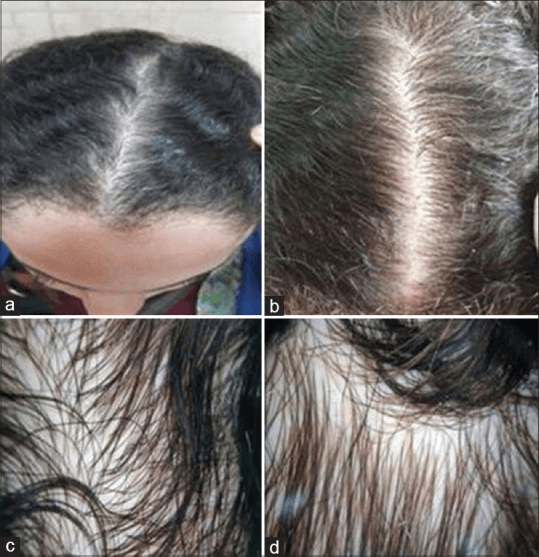
Over time, that creates overall thinning.
(This vitamin D hair loss pattern is often mistaken for aging or chronic stress—but it’s surprisingly responsive to early intervention)
In many cases of vitamin D hair loss pattern, strands also become finer and more fragile before falling out—a process known as miniaturization. It can resemble early androgenetic alopecia, but if low vitamin D is the main driver, the process affecting low vitamin D and hair thinning is often reversible. This connection between low vitamin D and hair thinning often goes undetected—until regrowth starts after supplementation
For example, a study of women with telogen effluvium found that restoring vitamin D levels led to significant hair regrowth—without adding any hair-specific interventions.
This in fact aligns with many anecdotal reports of vitamin D hair growth before and after supplementation, especially in cases of moderate to severe deficiency.
If your hair has started thinning without explanation, especially alongside fatigue or mood changes, it may not be about aging—it could be a missing cofactor.
Low vitamin D and hair thinning are more connected than most people realize.
While it’s not the only root cause of hair loss, it’s one of the easiest to test and correct—and often the most overlooked.
Suspect Vitamin D Is Behind Your Hair Loss?
Now’s the time to find out—before miniaturization becomes permanent. These vitamin D tests include a physician’s order with no prescriptions needed.
5. Is Vitamin D Hair Loss Reversible? What the Science Says
Not all hair loss is the same.
Some types can bounce back with the right intervention. Others are harder to undo — especially if the follicles are gone for good.
So, is vitamin D hair loss reversible?
In most cases, yes — but only if you catch it before the damage becomes permanent.
5.1 It Starts With the Type of Hair Loss
Vitamin D–related hair loss often overlaps with telogen effluvium or early-stage Androgenetic Alopecia (AGA) — both of which are potentially reversible.
But compare that to scarring alopecia, where inflammation has destroyed the follicle entirely.
Here’s how the major categories break down:
| Hair Loss Type | Primary Cause | Reversible? |
|---|---|---|
| Telogen Effluvium (TE) | Stress, illness, or deficiency | ✅ Often reversible |
| Alopecia Areata (AA) | Autoimmune attack | ⚠ Sometimes reversible (esp. early) |
| Androgenetic Alopecia (AGA) | Hormonal + genetic | ⚠ Slows/stabilizes with treatment |
| Scarring Alopecia | Inflammation destroys follicle | ❌ Not reversible |
If low vitamin D is contributing to telogen effluvium or early-stage AGA, regrowth is often possible—especially if addressed before follicles shrink beyond repair.
5.2 Are the Hair Follicles Still Intact?
This is the critical question.
If hair follicles are miniaturized but intact, there’s still time.
Vitamin D deficiency, low iron, thyroid imbalances — these all affect hair cycling. But if corrected early enough, hair follicles can return to their full size and function.
But if an area has been completely bald for years, the hair follicle structure may have collapsed. Without its stem cells or vascular support, at present, it seems difficult to bring it back — even with supplements, PRP, or regenerative therapies..
So… Is Vitamin D Hair Loss Reversible?
In many cases, yes—vitamin D–related hair loss is reversible, especially if caught before follicle atrophy sets in.
Get Weekly Insights to Personalize Your Own Longevity Roadmap
Vitamin D plays several roles here:
- Supports VDR expression to maintain the hair cycle
- Helps regulate keratinocyte activity in the hair bulb
- Modulates immune response in autoimmune forms like AA
- Reduces inflammation-driven miniaturization in AGA
For deficiency-driven shedding, vitamin D might be the only thing standing between you and regrowth. And if you’re still asking, does low vitamin D cause hair loss, the results from both clinical studies and patient outcomes speak clearly: when addressed early, hair often rebounds.
Bottom Line
“If you’ve just started noticing hair thinning or hair shedding—even if it runs in your family—there may still be time to reverse it.
But if the area’s been bald for years, the focus should shift: What else is your hair loss telling you about your system?”
6. Why Vitamin D Alone Isn’t Enough – The Missing Cofactors
If you’ve been supplementing vitamin D but still struggling with hair loss, fatigue, or stalled regrowth—you’re not alone.
Most protocols skip one important fact:
Vitamin D can’t work alone.
Your body doesn’t just absorb vitamin D and send it straight to the follicles.
To actually activate it, transport it, and use it in the skin, you need critical cofactors—and they’re often missing from standard blood tests.
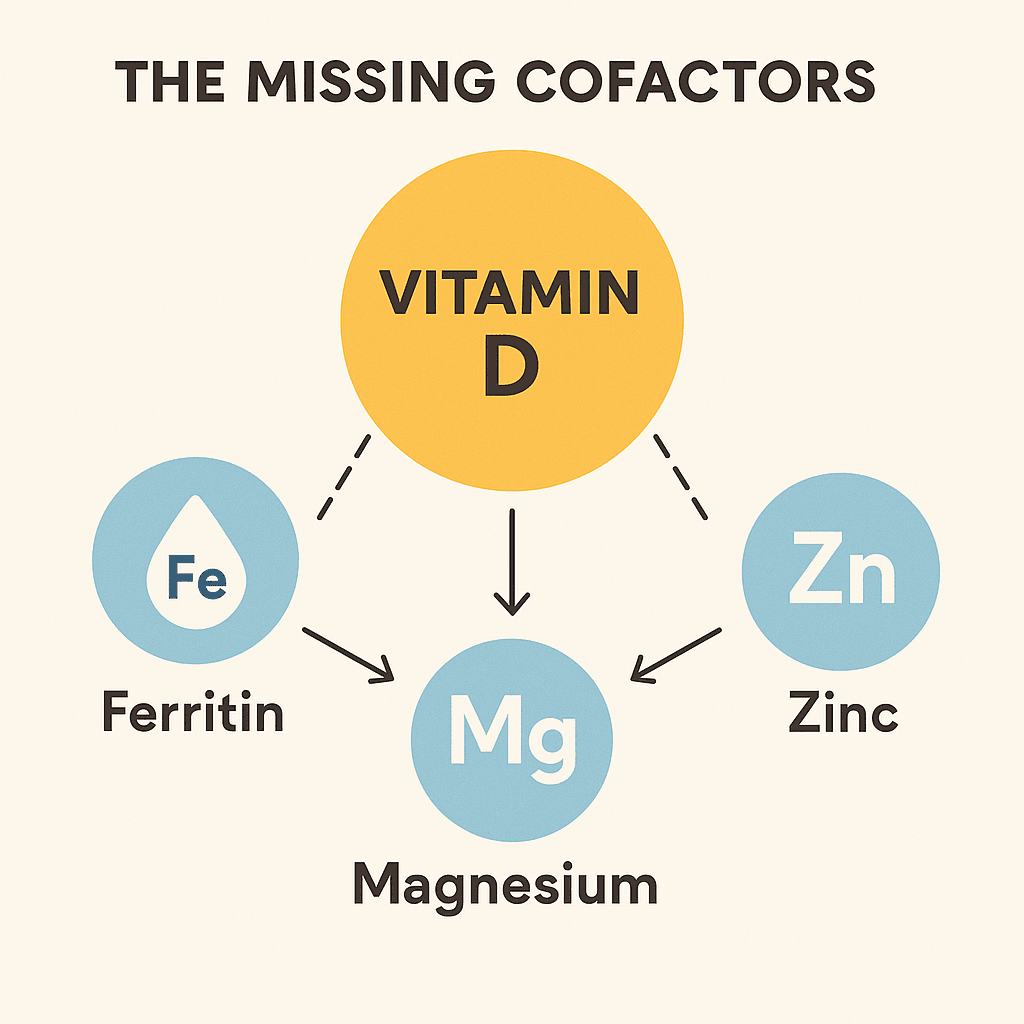
The three most overlooked (and most addressable) cofactors in vitamin D hair loss:
- Ferritin (Iron storage) → Low ferritin is one of the common causes of diffuse thinning, especially in women. → Without enough stored iron, follicles shift prematurely into the resting (telogen) phase. → Many doctors don’t flag it unless it’s severely low—when hair may already be shedding.
- Zinc → Needed for optimal vitamin D receptor (VDR) function in the skin and follicles. → Also plays a key role in immunity, inflammation, and keratin production. → Deficiency can stall regrowth—even if your vitamin D dose is “normal.”
- Magnesium → Essential for activating vitamin D into its usable form. → Without adequate magnesium, vitamin D remains inactive, regardless of supplementation. → Critical for energy production in hair follicles and protein synthesis for hair growth.
- Vitamin D [25(OH)D] → The foundation of it all. If you’re not converting, absorbing, or delivering vitamin D to the hair follicle, nothing else will move.
So… What’s the Best Vitamin D for Hair Loss?
The best vitamin D for hair loss is the one your body can fully activate and use.
And that means knowing your cofactor status.
🧪 That’s why we created a targeted 3-mineral panel that checks:
Magnesium, Ferritin, and Zinc — the three critical cofactors most doctors overlook until your hair is already thinning.
👉 [View the Hair Loss Minerals Panel details →]
Before you take more supplements, check if the root deficiency has been tested and identified.
Additional Supporting Nutrients for Hair Loss (For Deeper Optimization)
Once the basics are covered, a few other micronutrients may further support follicle cycling, immune balance, and vitamin D activation:
- Magnesium → Required for converting vitamin D into its active form
- Vitamin K2 → Helps direct calcium away from soft tissues, including follicles
- Selenium → Linked to thyroid balance and antioxidant defense
- Iodine → [write this..]
- Thyroid hormones (Free T3 / T4) → Important for hair density, regrowth, and shedding regulation
These are included in our Advanced Hair Optimization Panel — ideal for those who want to go beyond the basics.
👉 [Learn more about the Advanced Panel →]
Start simple. Expand as needed. Most of the time, it begins with vitmain D, magnesium, iron, and zinc.
7. Action Steps: What to Do if You Suspect Vitamin D–Related Hair Loss
In sum, hair loss that creeps in slowly — thinning across the part line, fewer baby hairs, or a scalp that suddenly feels more “visible” — is often misattributed to age or stress.
But more often than not, these are early-stage signs of disruption in a key nutrient pathway.
If you suspect vitamin D–related hair loss, here’s how to move from guessing to clarity:
✅ Step 1. Test Your Vitamin D [25(OH)D]
If you’ve never checked your vitamin D levels—or it’s been over a year—it’s worth starting here.
- Even “low-normal” levels (~20–30 ng/mL) can interfere with hair cycling, especially if other stressors are present.
- For optimal follicle support, aim for 40–60 ng/mL—a range backed by skin and scalp studies.
- Because vitamin D levels fluctuate with sun exposure, it’s easy to miss a seasonal drop that’s already affecting your hair.
Hair regrowth lags behind deficiency. By the time you notice thinning, your levels may have been low for months.
If you’re unsure where you stand, a clinical-grade test can give you clarity—and a baseline to track over time. This isn’t a drugstore strip, but a physician-authorized lab test delivered to your home, with results processed by certified diagnostics.

✅ Step 2. Reframe Your Sun Exposure
For most people, the body’s main source of vitamin D isn’t food—it’s the sun. But getting enough UVB to make a difference is trickier than it seems.
- The vitamin D hair loss pattern often mirrors seasonal drops in sunlight. Levels naturally rise in summer, then dip by late winter—just as hair shedding tends to pick up.
- The most effective time for vitamin D synthesis is midday sun—roughly between 10am and 2pm—when UVB rays are strongest. Morning or late afternoon sun won’t do much for D levels, even if you’re outside.
- If you work indoors, live above 35° latitude, or cover your skin (clothing, sunscreen), your ability to synthesize D may be limited for much of the year—even on sunny days.
You don’t need to sunbathe excessively.
Just 10–20 minutes of unprotected midday exposure (arms, legs, or torso) a few times per week can make a difference—especially in spring and summer.
But for many, testing + supplementation are still needed to close the gap.

✅ Step 3. Re-Test in 2–3 Months
Once you’ve made changes—through sun, supplements, or both—it’s important to check if they’re working.
- A follow-up test after 2 to 3 months shows whether your levels are improving and if you’re moving into the target range.
- Don’t aim for a “perfect” number. You’re looking for directional progress, especially if you started out low or symptomatic.
- Re-testing is also how you catch overshooting—which, while rare, can happen with high-dose supplements and low cofactor support.
Too much vitamin D may lead to nutrient imbalances, including low magnesium or calcium dysregulation. And in sensitive cases, this could potentially contribute to more hair shedding—not less.
This is why testing isn’t just a one-time event. It’s a tool for dialing in a strategy that fits your system—not someone else’s.
✅ Step 4. Track Hair Progress Visually
Hair doesn’t change overnight—but it does respond over time, and over a long time if the underlying cause is addressed.
Use a “vitamin D hair growth before and after” mindset to stay objective:
- Take monthly scalp photos in consistent lighting and angles—top-down, hairline, and part line are especially useful.
- Look for early markers of improvement: new baby hairs, soft regrowth at the temples, increased fullness, and reduced daily shedding.
- Keep in mind: the hair cycle is slow. It may take 3–6 months to visibly reflect improvements in nutrient status.

And if nothing’s changing after that window? That’s a sign to re-evaluate your cofactors, inflammatory load, or other underlying factors.
✅ Step 5. Check Your Cofactors (Zinc + Ferritin + Magnesium)
You could have plenty of vitamin D in your bloodstream… but if the cofactors that activate and deliver it are missing, it may never reach your hair follicles where it’s needed most.
- Zinc helps trigger VDR (vitamin D receptor) activity in the skin and follicles. Chronic inflammation, stress, or gut absorption issues can quietly deplete it—even if your diet looks decent.
- Magnesium is essential for converting vitamin D into its active form. Without sufficient magnesium, vitamin D remains biologically inactive—regardless of how much you supplement.
- Ferritin, the storage form of iron, is critical for sustaining hair in the growth (anagen) phase. Many women with thinning hair have ferritin levels that are technically “normal,” but too low for hair recovery.
This is where many regrowth efforts stall. The vitamin D level looks fine—but the rest of the system isn’t cooperating.
If you’ve optimized your D intake and sun exposure but hair isn’t improving, this is the next place to look.
👉 [Check your vitamin D cofactor levels today →]
8. Conclusion: Hair Loss as a Longevity Clue
Hair doesn’t lie.
Before you feel off… before your labs look abnormal… your hair, skin, and nails often give you the first sign that something is shifting internally.
They reflect your internal biochemistry — from nutrient reserves and inflammation to hormonal rhythm and cellular energy.
That’s why hair loss shouldn’t be dismissed as cosmetic or inevitable.
It’s an invitation to look deeper.
To ask:
What else might be low, overloaded, or out of sync?
In longevity, we often talk about vital signs — blood sugar, heart rate variability, sleep efficiency.
But the state of your skin, nails, and especially your hair can be just as telling.
And when the root cause is something as common (and correctable) as low vitamin D?

That’s a high-upside, low-risk fix.
- No drug required
- No side effects
- Just systems thinking, and targeted action
At the end of the day, addressing vitamin D for hair loss isn’t just about hair.
It’s about building a body that holds on to what matters — strength, clarity, vitality — for decades longer.
If your hair is thinning, don’t just reach for another expensive shampoo or drugstore treatment.
Check your vitamin D.
Check your essential cofactors.
A single test can reveal if one of the most common—and most correctable—drivers of hair loss is at play. Our physician-authorized kit is processed by certified clinical labs and delivered straight to your door—no prescriptions needed (depending on the test you choose, you may need to get a blood draw).
👉 [Order your vitamin D test →]
Get Weekly Insights to Personalize Your Own Longevity Roadmap
FAQ
Is vitamin D hair loss reversible?
Often, yes—if it’s caught early and the follicle is still intact.
Vitamin D–related hair loss, especially from telogen effluvium or early-stage pattern thinning, can reverse once levels are restored. Regrowth usually happens over 3–6 months as hair cycles normalize. But if follicles have fully miniaturized or scarred, results may be limited.
What’s the best vitamin D for hair loss?
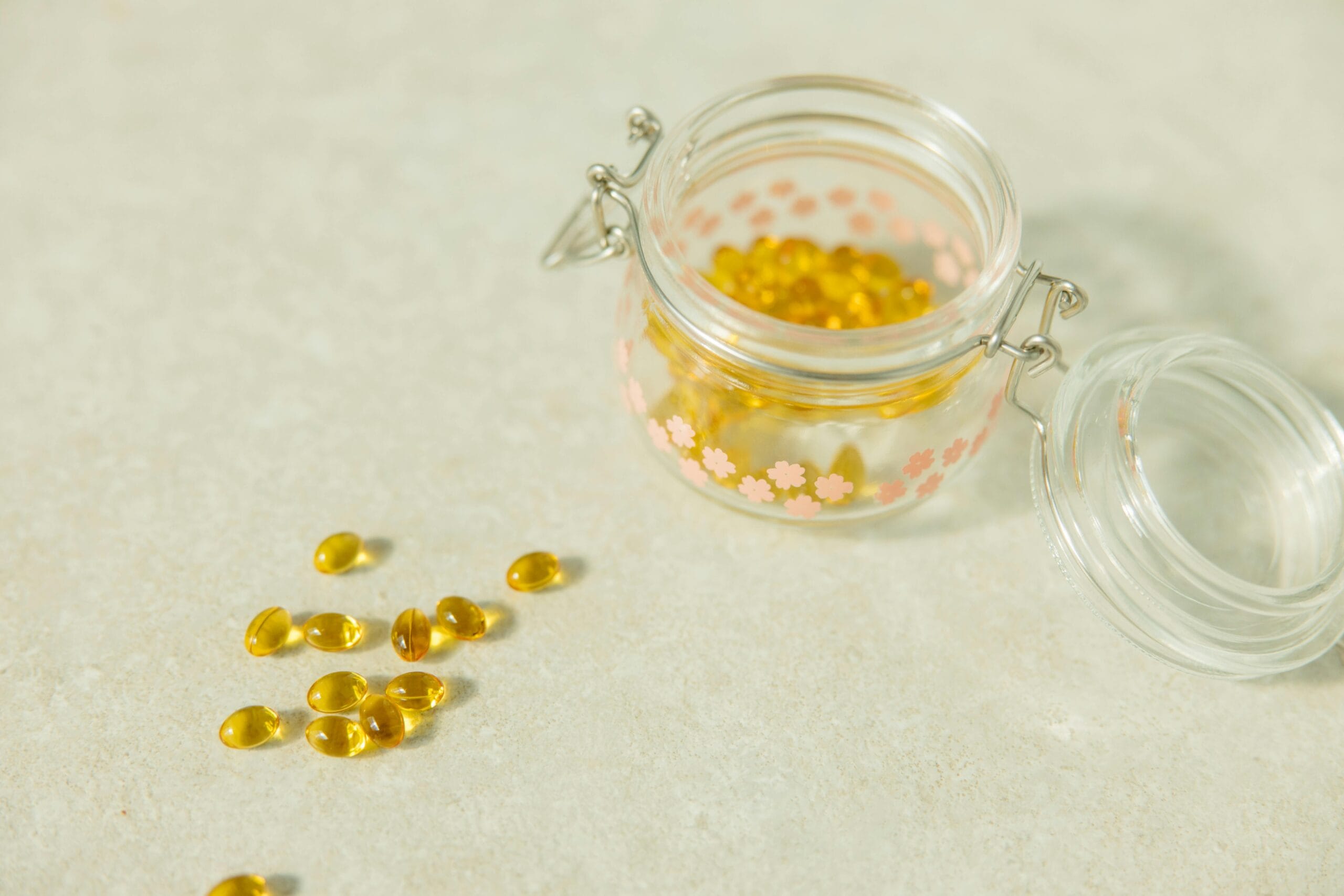
The best vitamin D for hair loss is the kind your body can absorb and use.
We recommend vitamin D3 (cholecalciferol) in softgel or liquid form, ideally paired with key cofactors like zinc and magnesium. Doses vary, so it’s smart to test first—then tailor based on your results.
Can low vitamin D cause hair loss?
Yes, low vitamin D can trigger hair loss—especially if it leads to disrupted follicle cycling.
Vitamin D supports the hair growth phase by activating the vitamin D receptor (VDR) in the follicle. When your levels are low, follicles may stay in the resting (telogen) phase too long, leading to shedding or stalled regrowth. This type of hair loss often shows up gradually as thinning at the crown, temples, or part line. That’s why we recommend testing your levels regularly to maintain optimal balance.
Can too much vitamin D cause hair loss?
In some cases, yes—especially if cofactors are missing or levels get too high. Too much vitamin D can throw off the balance of calcium, magnesium, and other nutrients, potentially affecting hair growth. Most hair loss from vitamin D happens due to deficiency, but over-supplementation without guidance can also backfire. You can learn more about proper vitamin D supplementation in my comprehensive Vitamin D Protocol.
References
- Lee S, Kim BJ, Lee CH, Lee WS. Increased prevalence of vitamin D deficiency in patients with alopecia areata: a systematic review and meta-analysis. J Eur Acad Dermatol Venereol. 2018 Jul;32(7):1214-1221. doi: 10.1111/jdv.14987. Epub 2018 May 18. PMID: 29633370.
- Sanke S, Samudrala S, Yadav A, Chander R, Goyal R. Study of serum vitamin D levels in men with premature androgenetic alopecia. Int J Dermatol. 2020 Sep;59(9):1113-1116. doi: 10.1111/ijd.14982. Epub 2020 Jun 9. PMID: 32516435.
- Zubair Z, Kantamaneni K, Jalla K, Renzu M, Jena R, Jain R, Muralidharan S, Yanamala VL, Alfonso M. Prevalence of Low Serum Vitamin D Levels in Patients Presenting With Androgenetic Alopecia: A Review. Cureus. 2021 Dec 15;13(12):e20431. doi: 10.7759/cureus.20431. PMID: 35047268; PMCID: PMC8759975.
- Lee S, Kim BJ, Lee CH, Lee WS. Increased prevalence of vitamin D deficiency in patients with alopecia areata: a systematic review and meta-analysis. J Eur Acad Dermatol Venereol. 2018 Jul;32(7):1214-1221. doi: 10.1111/jdv.14987. Epub 2018 May 18. PMID: 29633370.
- Siddappa H, Kumar YHK, Vivekananda N. Evaluation of Association of Vitamin D in Alopecia Areata: A Case-control Study of 100 Patients in a Tertiary Rural Hospital of Southern India. Indian Dermatol Online J. 2019 Jan-Feb;10(1):45-49. doi: 10.4103/idoj.IDOJ_84_18. PMID: 30775298; PMCID: PMC6362755.
- El-Tatawy RA, Gheida S, Soliman GAM, Ismail M. Oral Vitamin D Treatment in Patients with Telogen Effluvium: Clinical and Dermoscopic Evaluation. Int J Trichology. 2023 Sep-Oct;15(5):183-190. doi: 10.4103/ijt.ijt_92_22. Epub 2024 Jul 11. PMID: 39170090; PMCID: PMC11335050.
- Author(s). (2022). Evaluation of vitamin D levels in chronic telogen effluvium patients. Türkiye Klinikleri Journal of Medical Sciences, 42(2), 112-117.
- Karadağ, A. S., Ertuğrul, D. T., Tutal, E., Akın, K. O., & Bilgili, S. G. (2011). The role of anemia and vitamin D levels in acute and chronic telogen effluvium. Turkish Journal of Medical Sciences, 41(5), 827-833.


